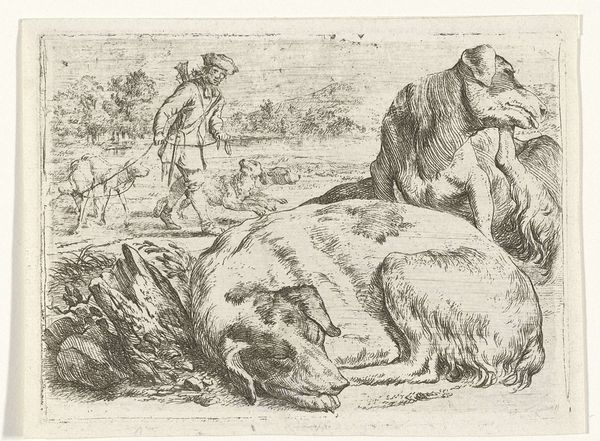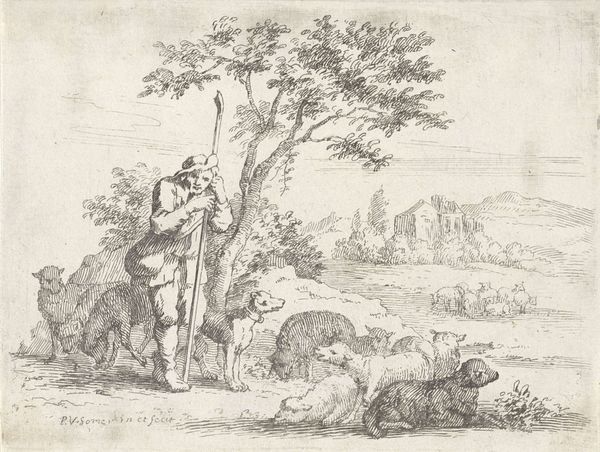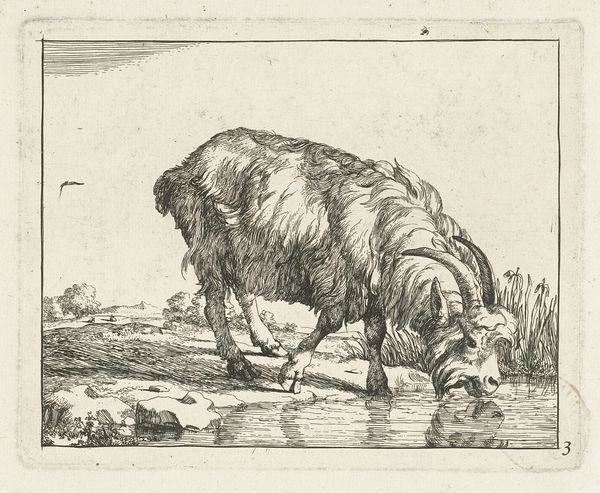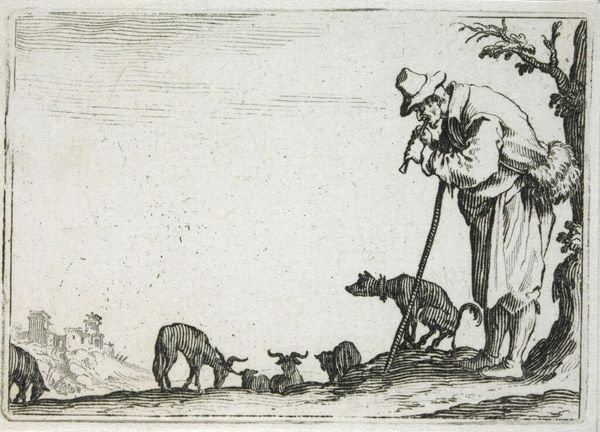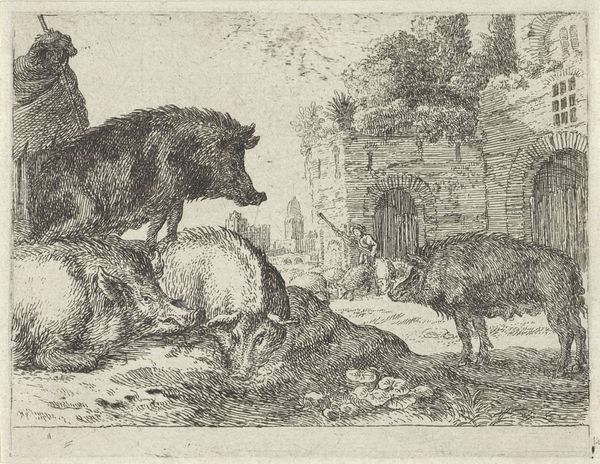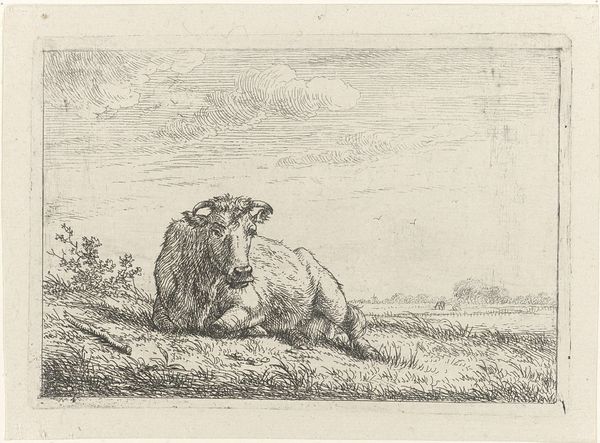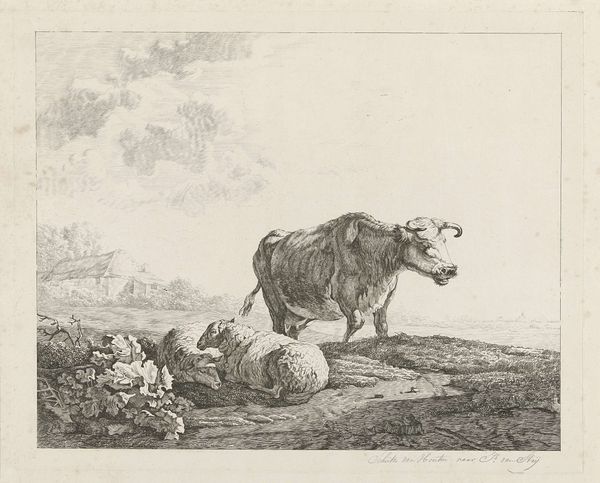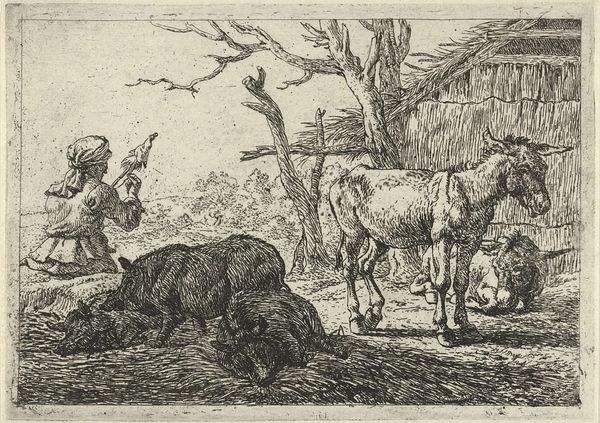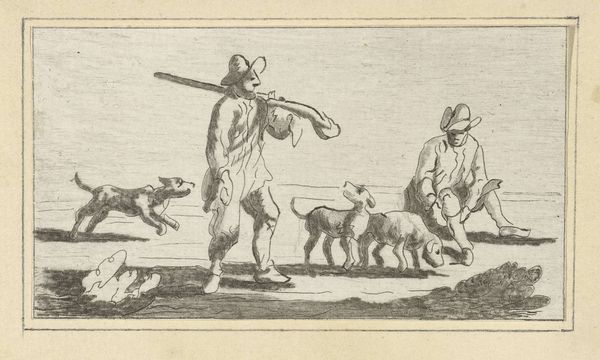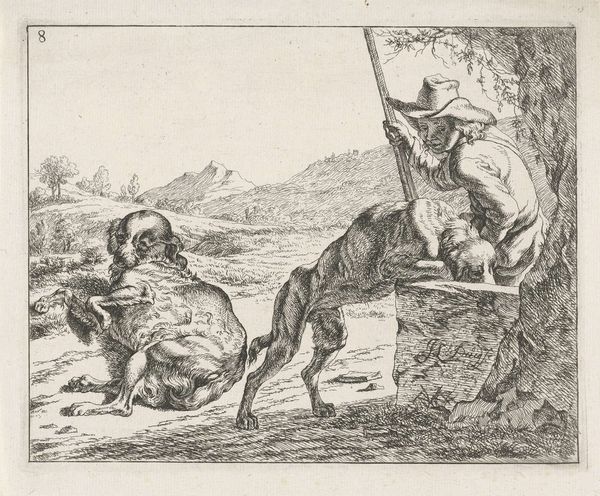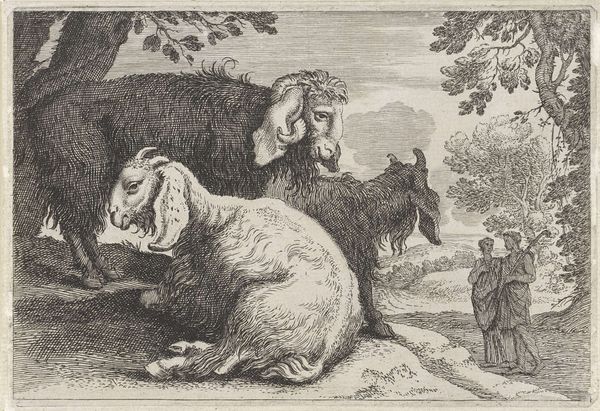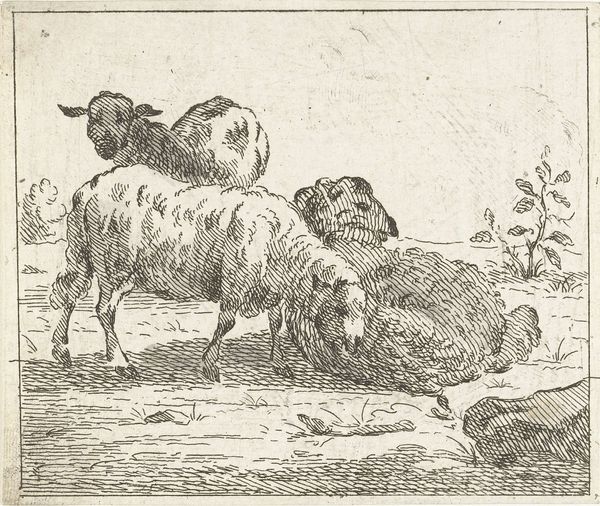
drawing, print, etching, engraving
#
drawing
#
baroque
# print
#
etching
#
landscape
#
figuration
#
line
#
genre-painting
#
engraving
Dimensions: height 92 mm, width 139 mm
Copyright: Rijks Museum: Open Domain
Editor: This etching by Stefano della Bella, created sometime between 1620 and 1664 and titled "Boer drijft zwijnen voort," depicts a peasant herding swine through a sparse landscape. It's interesting how the line work emphasizes the texture of the pig's bristly hair. What strikes you about this work? Curator: It’s interesting to consider this print not just for its subject, but also for the material reality of its production. Think about the copperplate, the labour of the engraver meticulously carving the image, and the press itself – all means of production in a proto-industrial age. Editor: That’s a good point, I hadn't thought about the actual production of it. So, in the context of it being a reproducible image, would you say the artist is trying to represent an idealized or realistic vision of peasant life and labor? Curator: Well, look at the subject, a common farmer depicted with his livestock. But consider the audience for this print; were they members of this agricultural community, or were they wealthy patrons, detached from the day to day manual labour? The distribution and consumption of this image likely dictated its purpose more than some "realistic" depiction of labour. What do you think this tells us about the art market in the 17th century? Editor: Hmm, so maybe the print served more as a sort of collectible for the wealthy, a window into a life they didn’t experience. The “Boer” in the print would not have been able to afford it. I can see how analyzing the production and distribution of this print provides new ways of interpreting it. Curator: Exactly. By acknowledging its materiality, we start to peel back the layers of social context embedded within. This focus shifts our interpretation, connecting the artistic piece directly to the economic and social dynamics of its time. Editor: Thanks, seeing the artwork through the lens of material and social history really broadened my understanding!
Comments
No comments
Be the first to comment and join the conversation on the ultimate creative platform.
